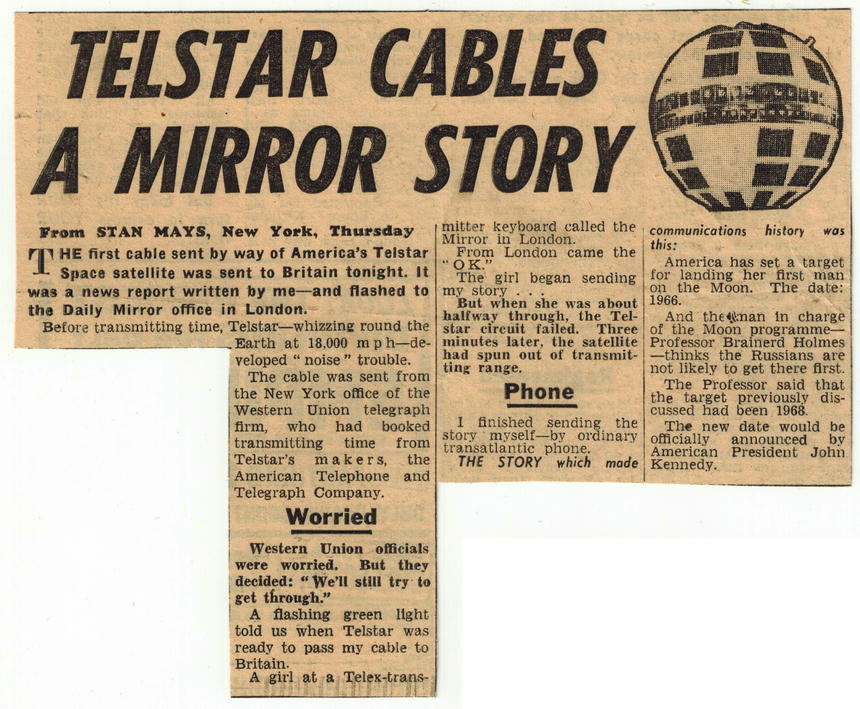Scrapbook 3: Telstar Cables a Mirror Story

TELSTAR CABLES A MIRROR STORY
From STAN MAYS, New York, Thursday
THE first cable sent by way of America’s Telstar Space satellite was sent to Britain tonight. It was a news report written by me—and flashed to the Daily Mirror office in London.
Before transmitting time, Telstar—whizzing round the Earth at 18,000 mph—developed “noise” trouble.
The cable was sent from the New York office of the Western Union telegraph firm, who had booked transmitting time from Telstar’s makers, the American Telephone and Telegraph Company.
Worried
Western Union officials were worried. But they decided: “We’ll still try to get through.”
A flashing green light told us when Telstar was ready to pass my cable to Britain.
A girl at a Telex-transmitter keyboard called the Mirror in London.
From London came the “OK.”
The girl began sending my story . . .
But when she was about halfway through, the Telstar circuit failed. Three minutes later, the satellite had spun out of transmitting range.
Phone
I finished sending the story myself—by ordinary transatlantic phone.
THE STORY which made communications history was this:
America has set a target for landing her first man on the Moon. The date: 1966.
And the man in charge of the Moon programme—Professor Brainerd Holmes—thinks the Russians are not likely to get there first.
The Professor said that the target previously discussed had been 1968.
The new date would be officially announced by American President John Kennedy.